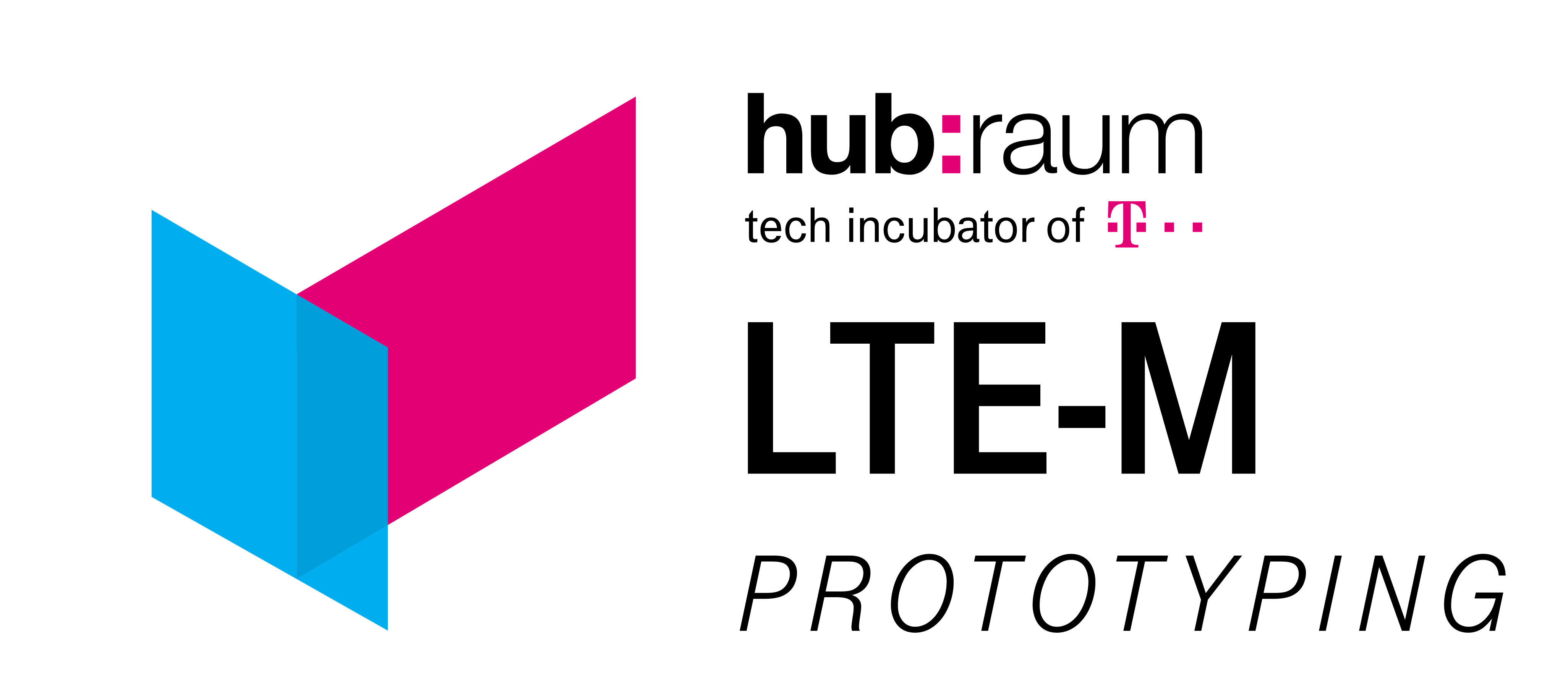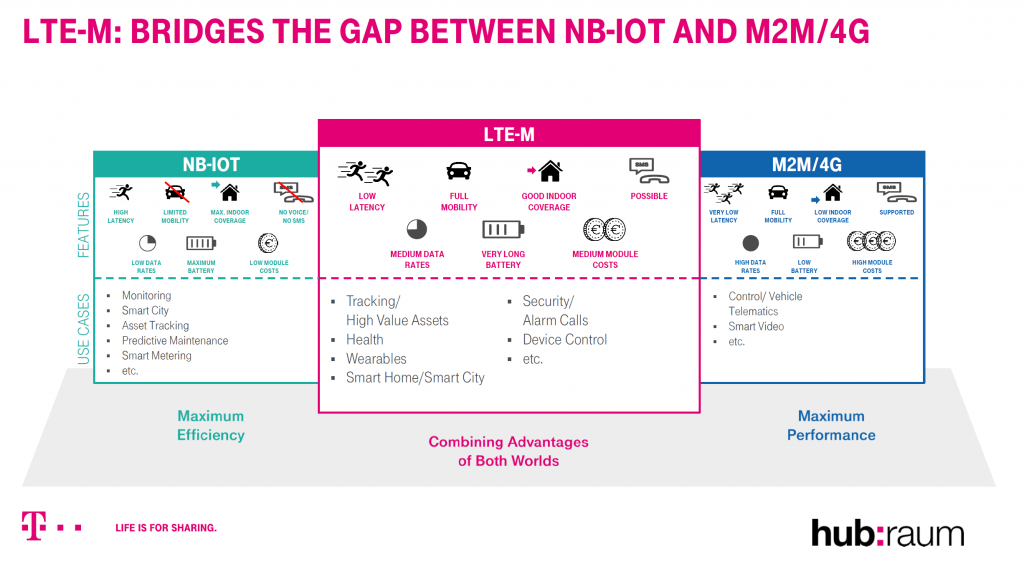Exclusive Interview: High Potential Prototyping
Deutsche Telekom backs entrepreneurs to accelerate the development of LTE-M
 Having rolled out NB-IoT connectivity across much of its European and US footprint, Deutsche Telekom is now working with start-ups and enterprises alike to explore the potential of LTE-M. The Bonn-based group sees the two Mobile IoT technologies working in tandem: NB-IoT connecting very low power, very low data applications, and LTE-M supporting solutions requiring higher throughput speeds, higher data volumes and mobility.
Having rolled out NB-IoT connectivity across much of its European and US footprint, Deutsche Telekom is now working with start-ups and enterprises alike to explore the potential of LTE-M. The Bonn-based group sees the two Mobile IoT technologies working in tandem: NB-IoT connecting very low power, very low data applications, and LTE-M supporting solutions requiring higher throughput speeds, higher data volumes and mobility.
Building on two successful prototyping programmes for NB-IoT solutions, hubraum, Deutsche Telekom’s in-house tech incubator and T-Systems, a unit of Deutsche Telekom, are now running a similar programme for LTE-M. “LTE-M completes the IoT landscape,” says Roman Duzhyk, Programme Manager at hubraum. “It bridges the gap between NB-IoT and LTE-Cat 1.”
In June, almost 150 start-ups and IoT-specialist companies from across Europe and the US submitted proposals to hubraum’s new LTE-M prototyping programme. Together, the incubator and T-Systems selected 24 solution partners to take to the next stage, which involved an onboarding workshop attended by more than 100 people, including entrepreneurs, business mentors, engineers, programme team members and experts from T-Systems. At the workshop, they worked together to establish the basis for the development of LTE-M prototypes.
“During the onboarding workshop, we selected 20 solution partners for further cooperation in prototyping LTE-M use-cases,” says Roman Duzhyk. “They come from 11 countries and span 13 industries. With DT’s support they are implementing LTE-M connectivity and test the IoT prototypes by evaluating the technology and business opportunities.” The submissions include proposals for smart city applications, wearable devices, digital healthcare solutions, and agriculture and tracking systems.
Now, the companies behind the remaining 20 use cases are coming to either Krakow, Rotterdam or Vienna, where there are LTE-M test networks, to validate the first LTE-M connections for their prototypes and further explore the business aspects. “We are giving them access to these test networks, so they will be able to demonstrate proof of concepts, which could be launched commercially next year,” explains Jakub Probola, Managing Director of the hubraum based in Krakow’s office. “The programme will finish by the end of this year and we’ll look at the local operators’ roadmaps to see where the commercial proofs of concepts can be done. The operators are doing their roadmap planning right now and our solution partners will have an advantage in terms of early access to LTE-M.” Some of the solutions, such as tracking assets across international borders, also will need operators to support LTE-M roaming.
Demand from big business
Although Deutsche Telekom hasn’t yet finalised its roll-out plans for LTE-M, the operator is working on proofs of concepts with potential customers in many of its markets, including Germany, Netherlands, Austria and Poland. “There is a lot of demand for LTE-M, both for new use cases and to replace 2G or 3G connections, among companies from various industries, including many blue-chips” says Jens Olejak, Senior IoT Product Manager at Deutsche Telekom. “As soon as our network roll-out plans have been confirmed”, Jens Olejak says, “Deutsche Telekom will move quickly to upgrade its existing LTE networks to support the Mobile IoT technology.”
“LTE-M really fills a big gap. It is much more than a niche,” adds Carolin Oberwelland, who leads the prototyping programme team on T-Systems side in Bonn. She explains that LTE-M’s ability to provide low power connectivity, while supporting connected mobility, means the technology is ideally suited to provide the connectivity for a broad range of IoT solutions. These include high-value industrial asset tracking, such as industrial containers, which need to have a very long battery life, and connected security alarms, which can, for example, be integrated into a shoe sole and activated by tapping your feet together. “These safety shoes can be used by professionals in dangerous workplaces or people at risk of being kidnapped,” Carolin Oberwelland explains, noting that the low cost of LTE-M modules means they can also be used for one-time applications where necessary.
T-Systems also believes LTE-M will be widely used in wearable devices, such as smart watches and for health monitors. “For example, LTE-M can be used in a miniature wearable that is so small it can be placed around a newborn baby’s wrist and monitor his or her vital signs,” Carolin Oberwelland says. The technology could also support smart city and smart building applications, such as connecting energy meters or air conditioning, in solutions which require more than the periodic one-way transmission of small amounts of data or need to be mobile. For example, LTE-M can be used in air quality sensors attached to buses travelling around the city, providing a holistic map of air pollution.
“LTE-M is really essential for applications that require higher data rates, such as smart building solutions or measuring air quality, which can’t really be done with NB-IoT,” says Johannes Kaumanns, Vice President Business Development, Strategy & Portfolio/Products, Deutsche Telekom. “LTE-M’s energy efficiency is much better than that of Cat-1, and when compared with NB-IoT, it is still very good. Thus it can be used on containers that have to be moved around for weeks with no opportunity to connect to a power source or change the battery.”
He notes that LTE-M also offers significantly better indoor penetration than LTE Cat-1: “NB-IoT has the best possible indoor penetration, but LTE-M can be quite close to that. In many cases, it could be used instead of a short-range technology, such as Wi-Fi, which requires a local gateway and a cumbersome registration process.”
Working alongside NB-IoT
Over time, vendors are likely to roll out more and more dual-mode chipsets and modules, supporting both NB-IoT and LTE-M, enabling IoT solutions to harness either or both of these low power options. Jens Olejak says Deutsche Telekom now has achieved nationwide NB-IoT coverage in three markets (the US, Netherlands and Austria) and substantial coverage in seven more. In Germany, for example, the operator supports NB-IoT in more than 1,000 municipalities and plans to extend that coverage to all metropolitan areas by the end of 2018, before completing a nationwide rollout during 2019. Deutsche Telekom’s NB-IoT networks now serve thousands of commercial connections across the group.
Some of those connections have their origins in hubraum’s past prototyping programmes, which nurtured dozens of NB-IoT solutions developed mostly by start-ups. “Some of those solutions have been deployed commercially and we have learnt a lot about what use cases to support,” says Jakub Probola. “In the Polish market alone, there have been five to six big NB-IoT deployments. Abaro, for example, has deployed a commercial water metering solution in Poland with a couple of thousand connections. We have seen a significant move forward in the maturity.” In Germany, BS2, another participant in the NB-IoT programme, and Deutsche Telekom have implemented an NB-IoT solution in Dusseldorf airport, which employs connected sensors to monitor the structural integrity of the buildings. The same solution can also be used to monitor the health of skyscrapers and bridges.
“The prototyping programme for LTE-M is a natural extension of our Mobile IoT strategy,” concludes Jakub Probola. “Which technology is used will depend on the use case and which technologies are available in the local network.”
